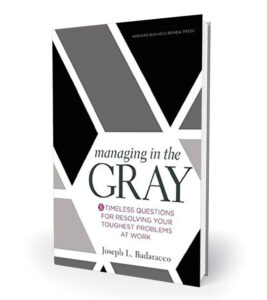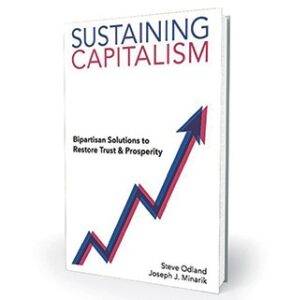Browser History: Big Decision Book Spotlights
 Managing in the Gray: Five Timeless Questions for Resolving Your Toughest Problems at Work by Joseph L. Badaracco. Harvard Business Review Press, 2016.
Managing in the Gray: Five Timeless Questions for Resolving Your Toughest Problems at Work by Joseph L. Badaracco. Harvard Business Review Press, 2016.
If only all business decisions were black and white, with options that were clearly good or bad. But of course, more often than not we are faced with the gray areas of decision-making. In Managing in the Gray, Mr. Badaracco, the John Shad professor of business ethics at Harvard Business School, presents a framework of five questions to help managers tackle their hardest decisions. Sometimes analytics are not enough, he asserts; human judgment must come into play. Mr. Badaracco finds time in the book to cover everything from groupthink to character, offering dozens of solid case studies. Managing in the Gray will not solve all your problems, but it may help you handle them better.
 How Women Decide: What’s True, What’s Not, and What Strategies Spark the Best Choices by Therese Huston. Houghton Mifflin Harcourt, 2016.
How Women Decide: What’s True, What’s Not, and What Strategies Spark the Best Choices by Therese Huston. Houghton Mifflin Harcourt, 2016.
“Society has been underestimating women’s abilities to make astute choices for years.” This is just one of many declarations Ms. Huston, a cognitive psychologist, makes in How Women Decide. Her goal is to smash gender stereotypes about female managers and their decision-making processes, while offering practical advice to help readers gain confidence in their own decisions. While Ms. Huston’s frequent use of social science examples throughout the book may drive some readers away, How Women Decide is truly a book for everyone—including men.
 Sustaining Capitalism: Bipartisan Solutions to Restore Trust & Prosperity by Steve Odland and Joseph J. Minarik. The Conference Board, 2017.
Sustaining Capitalism: Bipartisan Solutions to Restore Trust & Prosperity by Steve Odland and Joseph J. Minarik. The Conference Board, 2017.
Capitalism has created unparalleled prosperity, yet there is a growing crisis of confidence in both business and the economic system. In this book, Mr. Odland and Mr. Minarik—veteran leaders of corporate America and U.S. politics, respectively—argue that today’s executives and policymakers need to deliver more value to more people. The authors identify reforms to both public policy (including health care and education) and corporate-specific practices (such as rejecting short-termism) that can lead to long-term prosperity. The main takeaway is clear: The system can be fixed.



